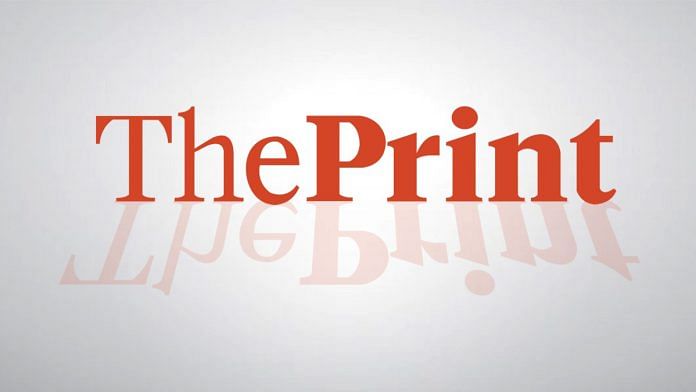New Delhi, Jun 28 (PTI) India’s percentage of zero-dose children to the total population has declined from 0.11 per cent in 2023 to 0.06 per cent in 2024, positioning it as a global exemplar in child health, as acknowledged by the UN Inter-agency Group for Child Mortality Estimation in its 2024 report, the Union Health Ministry said here.
According to WHO, zero-dose children are defined as those who lack access to or are never reached by routine immunisation services. They are operationally measured as those who did not receive their first dose of DTP (diphtheria-tetanus-pertussis).
The ministry credited the decline in such children to its unwavering commitment to immunisation evident through its Universal Immunization Programme (UIP), which provides free vaccination services annually to 2.9 crore pregnant women and 2.6 crore infants (0′-1 year).
At the same time, it asserted that any comparison of India with any other countries with high burden zero dose children needs to take into consideration India’s large population size and high vaccination coverage rate.
Vaccination remains one of the most powerful and cost-effective public health interventions, the ministry said in a statement, noting that the government has taken a proactive and inclusive approach to reach underserved populations.
“Our healthcare workers ASHAs and ANMs conduct over 1.3 crore immunisation sessions across the country,” the statement said. “As a result of the continued, sustained efforts and intensified implementation of vaccination drives and campaign across the country, the percentage of zero-dose children to the total population has declined from 0.11 per cent in 2023 to 0.06 per cent in 2024,” it said The approach remains progressive, and continuous efforts are being made in the current year to further reduce the burden of zero-dose children in the country, it said.
These achievements have positioned India as a global exemplar in child health, as acknowledged by the UN Inter-agency Group for Child Mortality Estimation (UN IGME) in its 2024 report, it said.
The effect of the increased number of lifesaving vaccines in reducing mortality and morbidity in children due to diarrhoea, pneumonia, meningitis and encephalitis is also clearly observable, the statement said.
According to the latest SRS (2020-22), the Maternal Mortality Ratio (MMR) in India has declined from 130/lakh live births in 2014-16 to 88/lakh live births in 2020-22.
The United Nations Maternal Mortality Estimation Inter-Agency Group (UN-MMEIG 2000-2023) report says that the MMR in India stands at 80 per lakh live births, reflecting an 86 per cent decline relative to the global reduction of 48 per cent since 1990, it stated.
According to the United Nations Inter-Agency Group for Child Mortality Estimation (UNIGME 2024 Report), India achieved a 78 per cent decline in the Under-Five Mortality Rate (U5MR) surpassing the global reduction of 61 per cent and 70 per cent decline in the Neonatal Mortality Rate (NMR) compared to 54 per cent globally during 1990 – 2023.
In addition to focused attention on increasing vaccination coverage, India’s UIP embodies a comprehensive range of vaccines recommended by the World Health Organization (WHO).
Till 2013, there were only six available vaccines in the programme.
Currently, India’s UIP covers 12 vaccine-preventable diseases and has seen significant expansion, the statement said.
With continued focus on improving vaccine coverage, India has taken a proactive and inclusive approach to reach underserved populations.
The Government of India in consultation with all states and UTs, has launched targeted campaigns to address challenges among zero-dose children, particularly in urban slums, peri-urban areas, migratory populations, hard-to-reach regions, and communities affected by vaccine hesitancy.
“To amplify our reach, we are leveraging technology and community engagement. The U-WIN platform tracks immunisation status digitally, ensuring no child is missed.
“Public awareness campaigns are being intensified using mass media, community radio, social media, and even street plays to educate families. Healthcare workers, ASHAs, and ANMs will go door-to-door, not just to vaccinate, but to sensitize the beneficiaries about the benefits of vaccination,” the statement said.
Some key initiatives include roll out of Zero Dose Implementation Plan 2024 across 143 districts in 11 states with a high burden of unvaccinated children; Mission Indradhanush (since 2014), intensified in 2017 in collaboration with state governments, it has vaccinated 5.46 crore children and 1.32 crore pregnant women — previously unreached or under-vaccinated.
The initiatives also include Pulse Polio Campaigns, and Village Health and Nutrition Days (VHNDs) organised regularly for immunisation and outreach activities at the community level.
The annual birth cohort in India (2.6 crore) exceeds the total population of several countries, including New Zealand, Australia, Finland, and Switzerland.
Given the varying sizes of the countries across the globe, the percentage comparison shows it at par with the vaccination coverage levels observed in many high-income countries for e.g., New Zealand (DTP-1 93%), Germany & Finland (DPT-3 91%), Sweden (MCV-1 93%), Luxembourg (MCV-2 90%), Ireland (PCV-3 83%), United Kingdom of Great Britain and Northern Ireland (Rota C 90%). (WUNEIC report 2023), the statement said.
The comparative results of countries on zero dose children as a percentage of the total population shows that Yemen (1.68%), Sudan (1.45%), Angola (1.1%), Afghanistan (1.1%), Nigeria (0.98%), DR Congo (0.82%), Ethiopia (0.72%), Indonesia (0.23%), Pakistan (0.16%) have far more zero dose children as a percentage of their population compared to India’s (0.11% during 2023 as per the last Wuneic report released.
Any comparison of India with any other countries with high burden zero dose children needs to take into consideration India’s large population size and high vaccination coverage rate, the statement said.
Therefore, any interpretation or analysis based on isolated factors does not lend credence to the country’s progress on its immunization program, it emphasised. PTI PLB RT RT RT RT
This report is auto-generated from PTI news service. ThePrint holds no responsibility for its content.




